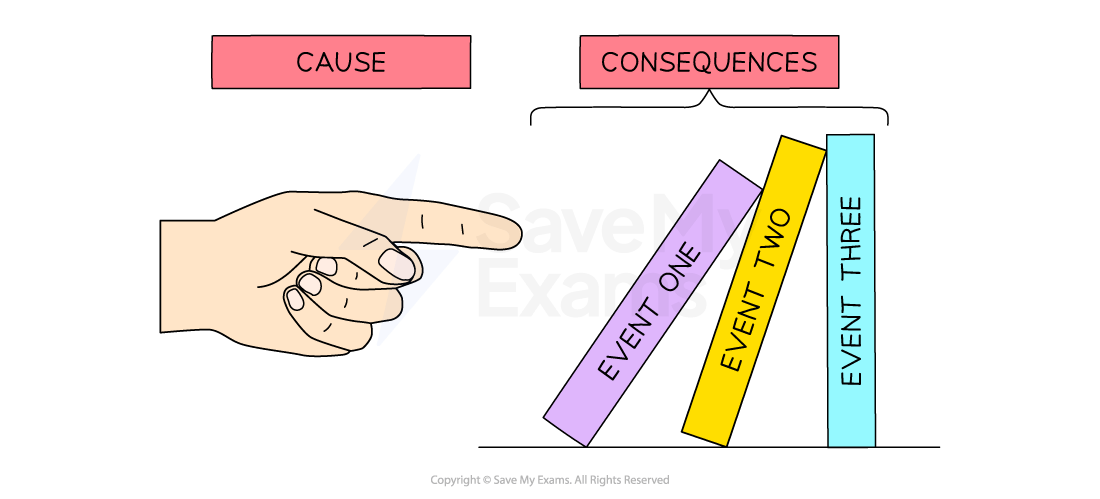The 4 Mark "Explain One Consequence of" Question (Edexcel GCSE History): Revision Note
Exam code: 1HI0
Summary of Question 1
Question 1 requires you to explain one consequence of a historical event
This question has changed format since 2024
Previously, you were asked to explain two consequences of one event
Now, you have to explain one consequence of two given events, separated into Question 1 (a) and Question 1 (b)
Amount of marks | 8 (2×4 marks) |
|---|---|
The time that you should spend on the question | No more than 10 minutes |
An example of the type of question you may encounter can be seen below:

In previous years, this question has focused on the following topics for Spain & the 'New World':
Year of exam | Question topic |
|---|---|
2018 | The Spanish settlement in the Caribbean, 1496–1512 (opens in a new tab) |
2019 | The encomienda system (opens in a new tab) |
2020 | The work of Catholic missionaries (opens in a new tab) |
2021 | No paper available |
2022 | The death of the Inca, Huayna Capac (opens in a new tab) |
2023 | The discovery of silver in the Spanish Empire, c1545–c1555 (opens in a new tab) |
2024 | The Treaty of Tordesillas (1494) |
How to explain consequences
Cause and consequence is a second-order concept
Causes and consequences are like falling dominoes
The causes are what push the dominoes over
For the example question, the desire to capture treasure was a cause of Cortés’s conquest of the Aztecs
The consequences are the other dominoes that fall
For the example question, one consequence of Cortés’s conquest of the Aztecs was the development of agriculture

Consequence
A consequence in history is something that has happened in response to a cause
Consequences can be:
Different depending on the person
For example, the consequences of Cortés’s conquest of the Aztecs on the Indigenous people of Mexico were different from the consequences for the Spanish conquistadors
Short- or long-term
Both positive and negative
Use causation connectives, such as:
"Due to …"
"As a result …"
"Consequently …"
"Explain one consequence of" question structure
Your answer should include:
Specific and relevant knowledge
A developed and well-explained consequence of the event or issue
Your answers could be written in PEE paragraphs:
P — Make a point by writing a consequence of the event in the question
E — Include evidence to support the point you have made (K)
Focus on key knowledge about the event in the question
E — Explain the question (SOC)
Focus on the key demands of the questions
Include a complex explanation that shows your understanding of cause and consequence
To achieve full marks, you need to answer both Questions 1 (a) and 1 (b). The questions are on two different events
Each consequence question is worth 4 marks
2 marks for knowledge (K)
2 marks for your analysis of the second-order concept of the consequence (SOC)
8 marks are available for answering both parts of Question 1
Worked example of an "Explain one consequence of" question
Worked Example
1 (a) Explain one consequence of Spanish control of Santo Domingo.
(4)
Answer:
One consequence of the foundation of Santo Domingo was that it became the centre of Spanish colonial control in the Caribbean (SOC). The town was established by Columbus in 1496 as a permanent base on the island of Haiti (K). From there, Spain was able to organise further exploration and control key new settlements such as Puerto Rico, Cuba and Panama (K). As a result, Santo Domingo became the capital of Spanish operations and was the first European-style city in the Americas (SOC).

Unlock more, it's free!
Did this page help you?